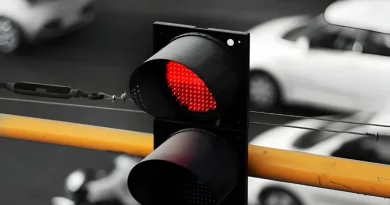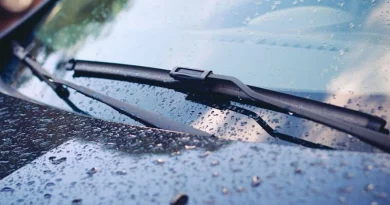The Future of Automotive Safety: 5 Hi-Tech Solutions to Protect You on the Road
The modern automotive industry is developing incredibly fast – automakers produce about 85 million cars a year. The availability of cars has involved them in all areas of our lives. Whether you need to drive to the grocery store, get to the office, or organize a trip, having a set of wheels at hand makes the task much easier.
Yes, today you can even find cars for rental almost anywhere in the US and the world. For example, travelers enjoy a large selection of exotic car rentals in Kansas City. Kansas car rentals make the road trip a smooth one, but safety is key to follow while you’re on the road.
In this sense, automakers are trying to make the car cause less harm to drivers, pedestrians, and other vehicles. As a result, they introduced various well-known technologies, including seat belts and airbags, ABS, and ESP. However, manufacturers don’t stand still and are constantly updating cars by adding new safety features. So, consider modern solutions in the field of automotive security and what awaits us in the nearest future.
Emergency braking
Emergency braking is a must in today’s world. This feature can stop the car if the driver is distracted or asleep. This system was first introduced by Volvo and has since been widely adopted by other manufacturers. For work, it uses sensor technology and detection systems, which include a lidar or front camera with radar.
How does this system operate? First, it determines the current car speed and the distance to the vehicle ahead. Then, by making a prediction, it decides whether a collision is possible. If yes, the automatic emergency braking (AEB) system determines the extreme time point for applying the brakes, and if there’s no effort on the pedals (the driver hasn’t pressed it), it turns on a light or sound indication for the driver to intervene. Finally, AEB stops the car in case the warning signal has been ignored.
Smart headlights
An already difficult night driving can be significantly hampered by rain or snow. Precipitation makes the road surface wet and slippery, and reduces visibility by several times, as car headlights illuminate drops or snowflakes instead of the road.
Fortunately, researchers at Carnegie Mellon University have developed a headlight system that combines a camera, projector, separation prism, and processor that together reduce the amount of droplets in the driver’s field of vision. The camera detects drops, the processor determines their future location, and the projector bypasses the particles of precipitation, illuminating only what is behind them.
At the same time, BMW engineers created laser headlights that are 1,000 times brighter than LED headlights, and a pedestrian-illuminating system. The Dynamic LightSpot system works similarly to adaptive headlights. Using infrared sensors and cameras, it recognizes a person by body temperature and illuminates him with a single beam.
V2V (Vehicle-to-Vehicle) technology
American brands under the auspices of the US government have made significant advancements in vehicle-to-vehicle communication. They are creating a system of special signals or a kind of automotive language. Thus, vehicles participating in traffic could transmit and receive information about their location/speed and set course in order to maintain a safe distance between each other.
It seems like an episode of a science fiction novel but such systems are already being tested and proven to be useful. They exclude the factor of human inattention. For example, when the car in front is obstructed by a foreign object and invisible to the driver’s eye, the car itself can decide how to act. This means it will turn, slow down, or go around it on time to prevent an accident. This technology is called V2V (Vehicle-to-Vehicle) and Ford experts are actively testing it.
Augmented reality
Initially, this technology was used in military aviation to project data from navigational instruments onto the windshield of jet fighters and helicopters. Over time, it proved its effectiveness, and many auto brands began to implement it.
So, the indication on the windshield allows the driver not to take his eyes off the road and not be distracted by the indications and signals of the dashboard. Currently, about 2% of the world’s cars carry this technology. At the same time, in some models, monochrome speed readings have evolved to full-color pictures that help to better perceive the traffic situation.
Augmented reality systems are already being introduced into mass production. What’s more, some premium auto brands are actively testing these technologies for navigation. When the car is static, this display can be used instead of the usual touchscreen display.
Cybersecurity technologies
Today, when you can pay for a car rental with a debit card and open your car doors via your smartphone, cybersecurity and vehicle protection become a priority. A modern car has an onboard computer with one hundred million lines of code. Therefore, connected to the Internet, or other vehicles and road infrastructure, it can be hacked.
According to Navigant Research, any vehicle needs a built-in cybersecurity system. However, not every company takes the same approach to achieving this goal. For example, Argus Cyber Security offers an intrusion detection and prevention module. It binds to a network of vehicle controllers that connects various electronic control units or computers.
In turn, TowerSec has developed software built into existing electronic control units. The software from Karamba Security provides a factory-set implementation and aims to create firewalls between infotainment control units, telematics, and onboard diagnostics. The peculiarity of such software is to perform heuristic scanning of vehicle data traffic, which differs from the traditional anti-virus approach based on signature scanning.

So, safety is a priority on the road. Whether it concerns the driver, passengers, pedestrians, or other vehicles, it’s important to provide a high level of protection for everyone. Luckily, modern safety technology increases the chances of a smooth and hassle-free ride if you drive calmly and adhere to traffic regulations.




